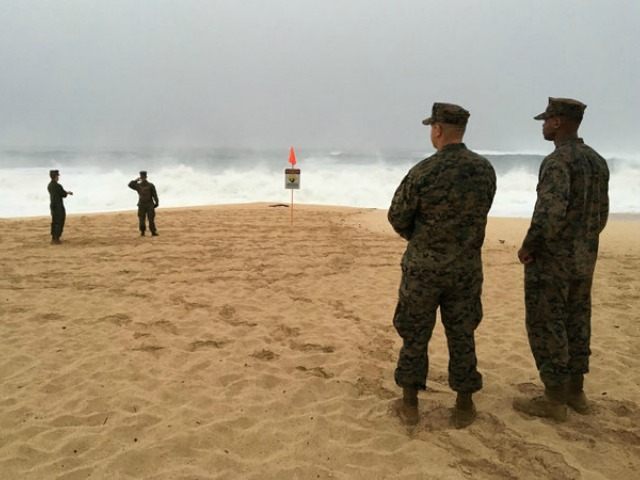The Marine Corps relived the commander of the helicopter squadron involved in the deadly crash off the coast of Hawaii three days prior to the tragedy, report various news outlets.
On the heels of this revelation, the Marine Corps said that trace elements of DNA have been found from Marines killed in the crash last month.
Citing multiple sources, the Times notes that Lt. Col. Edward Pavelka, the former commander, was fired on Jan. 11 “because senior officials determined he had failed to keep the unit operating at acceptable standards.”
A Marine official familiar with the removal of the commander told Marine Corps Times that the lieutenant colonel was “not able to maintain material readiness standards… for optimal use of manpower, material, facilities and funding.”
He reportedly spoke on the condition of anonymity because he is not authorized to discuss specific personnel matters.
“The Marine Corps has an exceptionally high standard for combat readiness and proficiency — especially in the aviation community,” said the official. “We hold commanders ultimately responsible for their units.”
“The instructors were fully qualified as crew chiefs and pilots in their respective roles,” 1st Lt. Courtney Caimona, a spokeswoman for the Marine Corps, told the Times.
Nevertheless, Marine Corps Times learned from an unnamed Marine familiar with the squadron’s troubles leading up to commander’s removal that the squadron as a whole was “way, way low” on flight time.
“That source declined to speculate what may have depleted training opportunities, saying only ‘they were not flying enough,’” notes the report.
Three days after he was relieved of his command, 12 Marines aboard two CH-53E helicopters from the Marine Heavy Helicopter Squadron 463 that Pavelka commanded for less than 11 months, were believed to be killed in a crash over the Pacific Ocean during a nighttime training mission about two miles north of Hawaii’s Oahu island, home to the aircraft.
“Last September, after another deadly CH-53E crash in North Carolina, a Marine Corps Times investigation found that aviation-related deaths in the Marine Corps — there were at least 19 between January and October — had reached a five-year high,” notes the report.
“Maintenance, flight hours and the effect on overall safety are concerns often cited by military leaders in the face of deep budget cuts imposed by Congress,” it adds.
Pavelka reportedly declined a request for comment.
In statement provided to Marine Corps Times, 1st Lt. Caimona, indicated that Brig. Gen. Russell Sanborn, the commanding general of 1st Marine Aircraft Wing, lost confidence in Pavelka’s ability to lead his subordinates, calling the move “in the best interest of the Marines and sailors of Marine Heavy Helicopter Squadron 463 and the Marine Corps.”
“Pavelka did not commit misconduct,” stressed Caimona.
On Jan. 11, Gen. Sanborn reportedly announced the change in command during a unit-wide formation.
“When Marine Corps Times inquired about Pavelka’s firing, the general offered to discuss his decision and related questions about the squadron’s recent performance,” points out the report. “The interview was later canceled, however.”
Marine officials have reportedly said that formal investigations into the tragedy are ongoing.
The search operation for the service members was called off Jan. 20, five days after it was launched.
Although no remains were recovered, all 12 Marines were declared dead.
However, in a statement released Tuesday, Capt. Cassandra Gesecki, a spokeswoman for the III Marine Expeditionary Force, said that DNA traces were found during search and rescue operations for the Marines, reports The Associated Press (AP), adding that the families of the identified Marines have been notified.
“It’s not immediately clear what brought down the aircraft. Initial reports suggested they collided over the ocean and exploded,” notes Marine Corps Times. “Coast Guard rescuers located four life rafts, but concluded that none had been occupied.”
“Six Marines were aboard each aircraft, Caimona said. On both, one instructor pilot was paired with a student pilot, and two instructor crew chiefs were paired with two students,” it adds. “Their training involved night vision equipment and a simulated scenario meant to practice loading troops and moving them. It’s unclear who was at the controls when the accident occurred.”
The spokeswoman revealed that Pavelka, who was replaced in Hawaii by Lt. Col. Eric Purcell, is awaiting a new assignment.

COMMENTS
Please let us know if you're having issues with commenting.